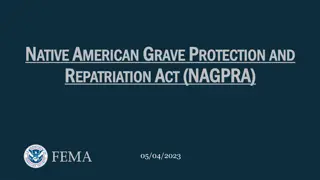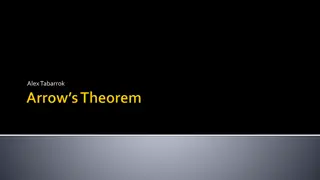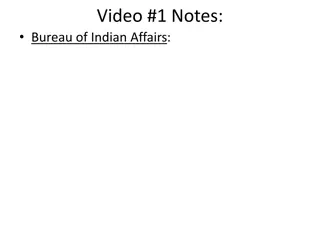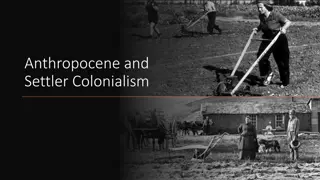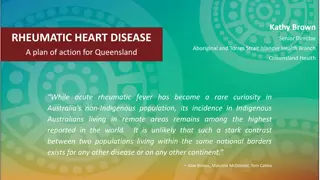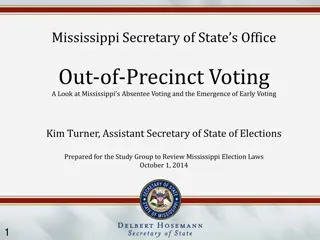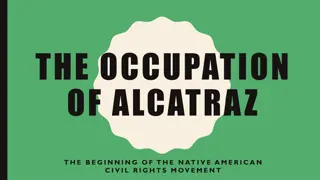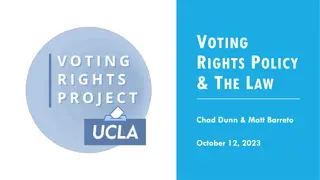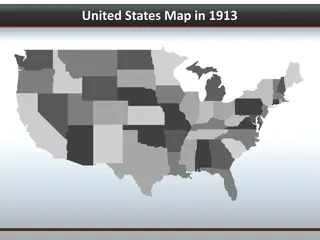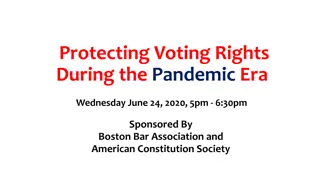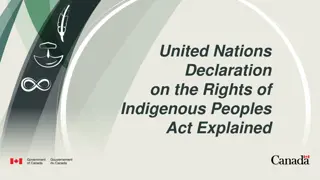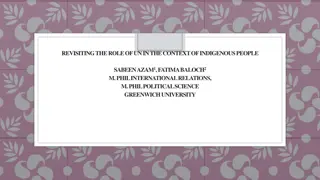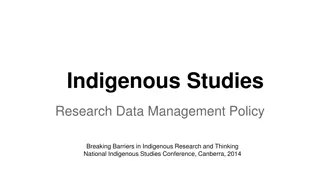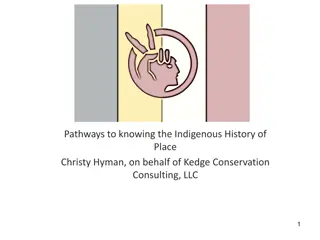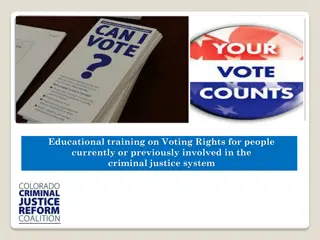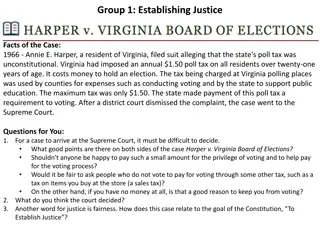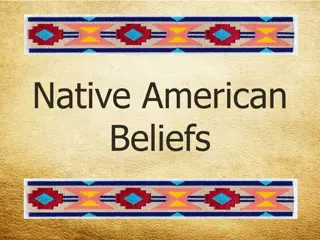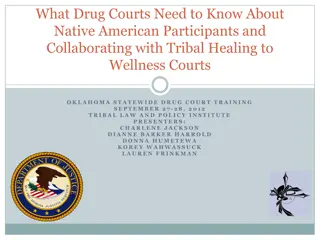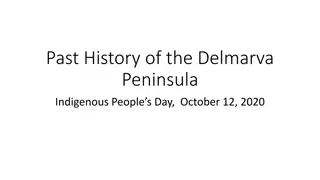Native American Voting Rights and Indigenous Governance in the United States
Native American voting rights in the United States have a complex history, with Native peoples gaining the right to vote gradually over time. Despite legal allowances, barriers such as nontraditional addresses, voter registration obstacles, and ID laws still hinder their voting participation. The Native American Voting Rights Act of 2021 aims to address these issues. Additionally, there are 574 federally recognized Indigenous Nations in the U.S., representing a diverse range of cultures and languages.
Download Presentation

Please find below an Image/Link to download the presentation.
The content on the website is provided AS IS for your information and personal use only. It may not be sold, licensed, or shared on other websites without obtaining consent from the author. Download presentation by click this link. If you encounter any issues during the download, it is possible that the publisher has removed the file from their server.
E N D
Presentation Transcript
Civic Rights of Indigenous Peoples
Question: When were Native people given the right to vote?
Voting Rights and Barriers Answer: While the fifteenth amendment in 1870 seemed to grant all US citizens the right to vote, it wasn t until the 1924 Snyder Act that Native Americans could actually reap the benefits of the 15th amendment Furthermore, native peoples weren t guaranteed the right to vote in every state until 1962 after fighting state by state to achieve it Despite being legally allowed to vote, Native Americans face huge barriers to voting including: - - - Nontraditional addresses: nonresidential addresses described as landmarks or crossroads; unnamed roads Voter registration barriers: economic feasibility, distance from county offices Voter ID laws: less likely to have a form of ID compliant with laws
NAVRA The Native American voting rights act (NAVRA) of 2021 was introduced in August of 2021 NAVRA has 6 main provisions - - - - - - Improves access to voter registration, polling places and drop boxes in Indian Country Mandates the acceptance of tribally or federally issued IDS where IDs are required Permits tribes to designate buildings to use as addresses for registration Establishes a Native American voting task force Requires pre-approval of any changes in election procedures Mandates culturally appropriate language assistance
Video: Tribal Sovereignty Explained https://www.youtube.com/watch?v=r3pohsdryNc
Question: How many Native nations are there in the United States?
Indigenous Governance Answer: There are 574 federally recognized Indian Nations (variously called tribes, nations, bands, pueblos, communities and native villages) in the United States. Approximately 229 of these ethnically, culturally and linguistically diverse nations are located in Alaska; the other federally recognized tribes are located in 35 other states. Additionally, there are state recognized tribes located throughout the United States recognized by their respective state governments American Indians and Alaska Natives are members of the original Indigenous peoples of North America. Tribal nations have been recognized as sovereign since their first interaction with European settlers. The United States continues to recognize this unique political status and relationship.
Question: Native citizens are citizens of what three sovereignties ?
Indigenous governance cont. Answer Tribal members are citizens of three sovereigns: their tribe, the United States, and the state in which they reside. They are also individuals in an international context with the rights afforded to any other individual. Native peoples and governments have inherent rights and a political relationship with the U.S. government that does not derive from race or ethnicity. The governmental status of tribal nations is at the heart of nearly every issue that touches Indian Country. Tribes have the inherent power to govern all matters involving their members, as well as a range of issues in Indian Country.
Whose Land Are You On? Can you think of any townships, roads, or landmarks near your hometown that have Native names? Use the following link to see what tribal land your hometown occupies https://native-land.ca Do the tribe names sound familiar? Are you surprised at all? Why is it important to understand the native history in the spaces we occupy?
Learn More https://www.americanbar.org/groups/crsj/publications/human_rights_magazine_home/voting-rights/how-the- native-american-vote-continues-to-be-suppressed/ - Suppression of Native Vote https://www.history.com/news/native-american-voting-rights-citizenship-History of Native Right to Vote https://www.hcn.org/articles/indigenous-affairs-law-6-things-you-should-know-about-the-2021-native-american- voting-rights-act more details on NAVRA https://www.ncai.org/about-tribes- more on tribal governance https://www.sundance.org/projects/rise - Rise documentary



